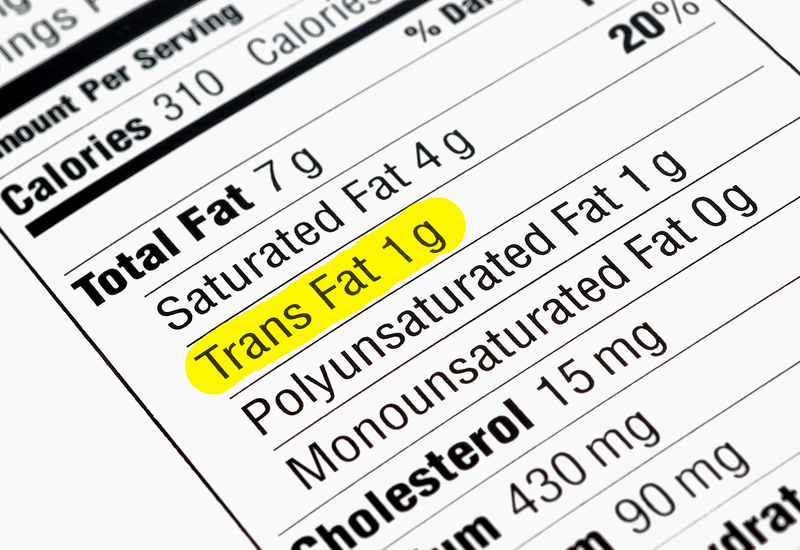Food Colorings & Ingredients To Avoid In Processed Foods
Busy lifestyles make it difficult to always eat fresh and healthy foods. Of course, the freshest food is always the best, but we all indulge in processed foods once in a while. As a result, we could be consuming some of the most potentially dangerous ingredients that can be found in processed foods. The more technical chemical terminology you find on a product's label, the more processed it is, and the more likely it is to contain harmful ingredients. Nevertheless, there are a few artificial additives common and potentially harmful enough that you should avoid at all costs. Discover the top harmful ingredients in processed foods now.
Monosodium Glutamate

Monosodium glutamate (or MSG) is commonly used for flavor enhancement and can be found in a lot of Chinese food, processed meats, canned soups, snack foods and canned vegetables. The adverse effects of MSG can include sudden sweats with a flushed face, headaches, numbness, chest pains, heart palpitations, weakness, and nausea. While all of these negative effects are short-lived and require no treatment, the current research on MSG indicates that thepotential for long-term health problems may have been overlooked in the past. Due to the limitations of past studies, present researchers are looking for connections between MSG and diseases that may have been missed. As of now, however, the evidence is still inconclusive. We know for certain that MSGs can cause mild adverse reactions for certain people whose bodies reject it, but unfortunately, we do not know the lengths or the long-term damage or lack thereof that MSG can cause. MSG can also go by different names, so when reading labels to avoid MSG, also look for monopotassium glutamate and vegetable protein extract.
Artificial Colors And Dyes

Many different dyes were once used to color foods, but the U.S. Food and Drug Administration has banned most of them due to the recurrence of many adverse health effects that they have caused. Only seven artificial colors remain legal to use in the production of food: Blue 1, Blue 2, Red 3, Red 40, Citrus Red 2, Green 3, Yellow 5 and Yellow 6. Among these seven, Red 40 has been the subject of the most research. Through that research, Red 40 is believed to be related to ADHD in children who have food allergies and learning disabilities. While it is likely that the other six legal artificial colors and dyes may contribute to some of the same problems, no studies have made such a link conclusive yet. As for Red 40, however, the studies conducted indicate that it appears to mimic ADHD symptoms. It is being studied further in an attempt to discover if it may even be a cause of ADHD in some children.
Potassium Bromate

Potassium bromate is a chemical commonly used in the production of bread. It is used to make the dough easier to handle and to make it rise higher. While the U.S. has taken no known steps to remove the chemical from bread production, and with many entities claiming it is completely safe, Canada, the United Kingdom, the European Union, and Brazil have all banned the chemical as it is likely linked to cancer. The International Agency on Research for Cancer found a strong potential for carcinogenic behavior in potassium bromate. This research was conducted in 1999, and as an initial survey of the matter, it did not find specific types of cancers, particularly vulnerable groups of people or amounts of the chemical that is more likely to cause cancer. Unfortunately, little research has been done since this, and we still do not have any more details on the matter. Coincidentally, nothing has challenged the study's findings, which concluded that the chemical, when used in bread products, is a possible carcinogen for human consumption.
High Fructose Corn Syrup

High fructose corn syrup is one of the most ubiquitous types of manufactured sugar added to food and drink products. This sweetener is derived from corn and processed as a preservative and flavor-enhancer. Large amounts of the substance, such as are found in a small cup of any soda, change glucose levels in the body. As such, a large quantity of it can be dangerous for diabetics and a risk factor of pre-diabetes for anybody. The link to this substance and diabetes is predominantly due to the substance's action of producing fat. It produces fats that dramatically increase a food's calorie count, and the body quickly stores these fats making them extremely difficult to burn off. As such, the intake of high fructose corn syrup is most likely a contributor in many cases of obesity and heart disease. Although there is controversy regarding whether or not complete avoidance of the substance is helpful or not, its apparent connection to diabetes, heart disease and obesity all point to the likelihood that completely avoiding it is indeed a wise decision.
Trans Fats

The production of trans fats involves converting natural oils into solid fats via a process known as hydrogenation. This process is attractive to manufacturers and consumers because of its ability to dramatically increase a food product's shelf life. Trans fats are the reasons that certain products, including fast food meats, can last an extremely long amount of time before going bad. They do occur in marginal amounts in some meats and are not thought to be dangerous in such cases. When they are manufactured, however, the results are different, and packaging is required by law to list the amounts. When it appears in processed meats or non-meat products, its effects can be exceedingly dangerous. Increasing bad cholesterol and decreasing good cholesterol, they can contribute to heart disorders and be a risk factor for heart attacks and stroke.